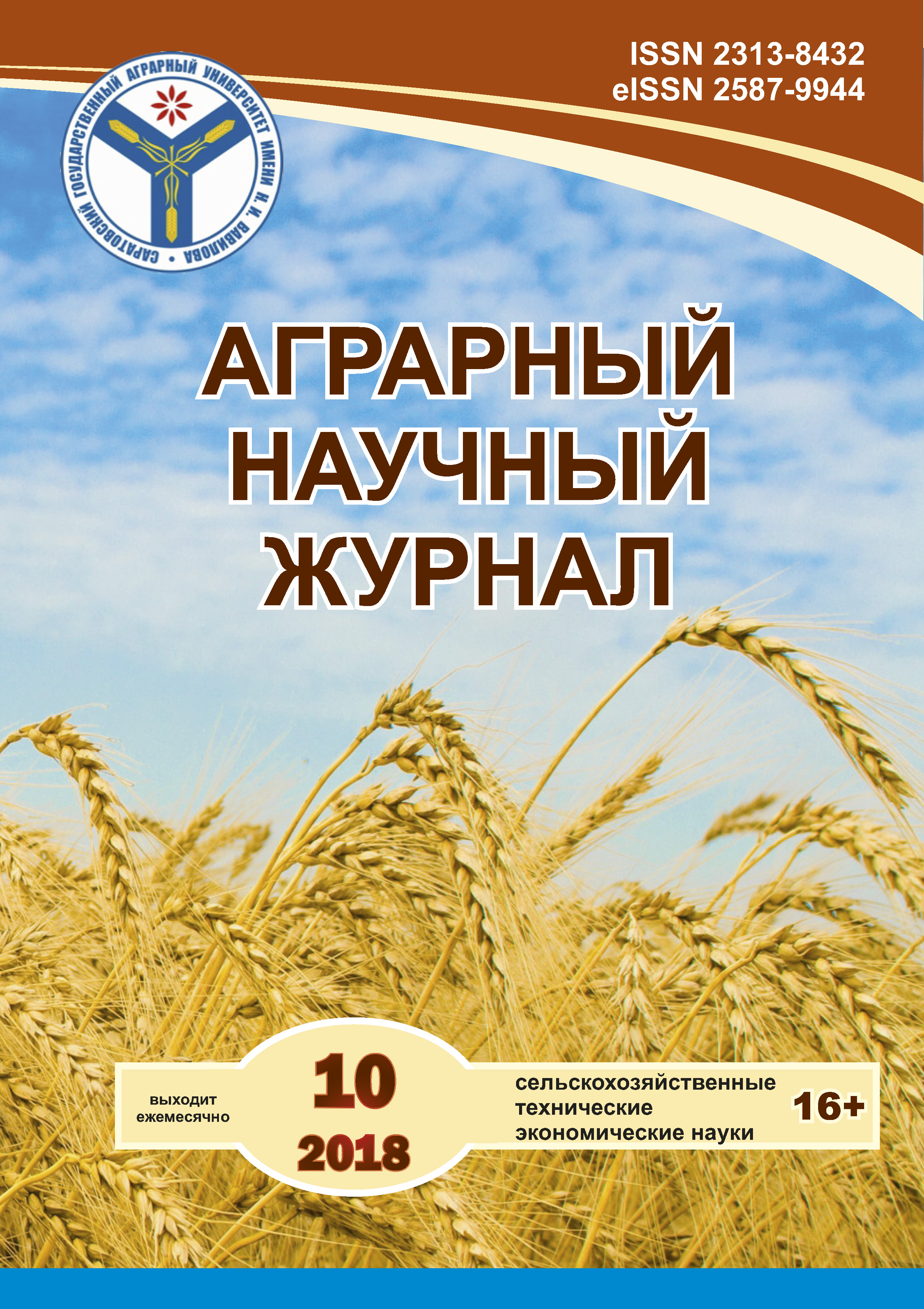PROTEOLYTIC ENZYMES OF GRAIN TRITICALE AFTER HUMIDIFICATION AND DRYING
DOI:
https://doi.org/10.28983/asj.v0i10.601Keywords:
triticale, corn, biopotential, proteolytic enzymes, humidification, dryingAbstract
It has been shown that neutral proteinases in the triticale grain are distributed unevenly: the activity of enzymes is concentrated in the embryo - their activity is 5.2-6.5 times higher than that of whole grain. It has been established that moistening of the grain leads to an increase in the activity of neutral proteinases - at a content wetness of 30% it is higher than the initial protein by 60-80% (for whole grains). In the embryo, the activity of the enzymes rapidly increases and, with a wetness content of 20%, reaches a maximum, increasing 1.5-2.0 times. In a seed without an embryo, the activity of neutral proteinases at a humidity of 30% is 118% and 120% of the initial one. Drying of moistened grain is accompanied by a decrease in the activity of neutral proteinases, but remains higher (by 15-25%) compared to grain with the initial moisture content.
Downloads
References
2. Кандроков Р.Х., Стариченков А.А., Штейнберг Т.С. Влияние ГТО на выход и качество тритикалевой муки // Хлебопродукты. – 2015. – № 1. – С. 64–65.
3. Касынкина О.М.,Орлова Н.С., Каневская И.Ю. Качество пшеничного хлеба, выпеченного с добавлением муки из тритикале // Аграрный научный журнал. – 2015. – № 12. – С. 18–20.
4. Кобелев К.В., Гернет М.В., Грибкова И.Н., Бойков А.В. Свойства тритикале и перспективы ее использования в бродильных напитках. // Хранение и переработка сельхозсырья. – 2013. – № 5. – С. 51-53.
5. Кобелев К.В., Гернет М.В., Хурушудян С.А. Тритикале – перспективная зерновая культура // Пиво и напитки. – 2016. – № 3. – С. 26–29.
6. Козьмина Н.П. Биохимия зерна и продуктов его переработки. – М.: Колос, 1976. – 375 с.
7. Леонова С.А., Пусенкова Л.И., Погонец Е.В. Оценка хлебопекарных свойств перспективных селекционных видов тритикале // Хлебопродукты. – 2013. – № 6. – С. 40–41.
8. Оценка качества зерна тритикале / Е.П. Мелешкина [и др.] // Хлебопродукты. – 2015. – № 2. – С. 48–49.
9. Пищевая химия. Лабораторный практикум / А.П. Нечаев [и др.]. – СПб.: ГИОРД, 2006. – 304 с.
10. Рубец В.С., Игонин В.Н., Пыльнев В.В. Селекция озимой тритикале в РГАУ-МСХА им. К.А. Тимирязева: история, особенности, достижения // Известия ТСХА. – 2014. – № 1. – С.115–124.
11. Технологические и биохимические показатели в оценке качества зерна тритикале сорта Тимирязевская 150 / И.С. Витол [и др.] // Вестник Алтайского государствен-ного университета. – 2017. – № 8 (154). – С. 43–48.
12. Технологические и биохимические показатели как составляющие качества муки тритикале / Г.Н. Панкратов [и др.] // Контроль качества продукции. – 2017. – № 2. – С. 38–44.
13. Thomas T.M. Triticale – a new cereal // Farm Food Research, 1984, Vol. 15. – No. 5, P. 191.








